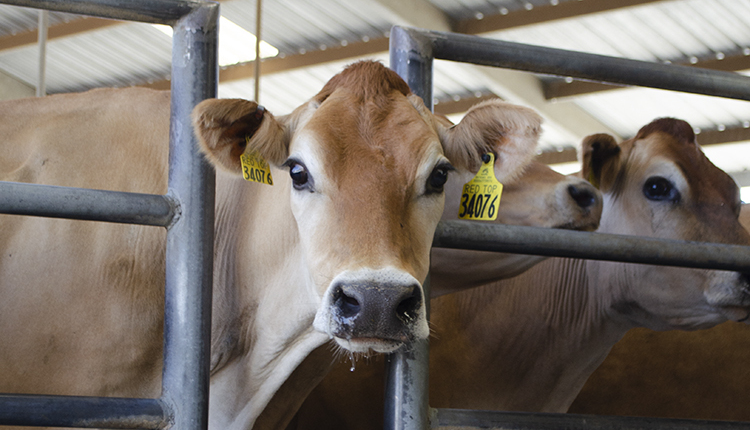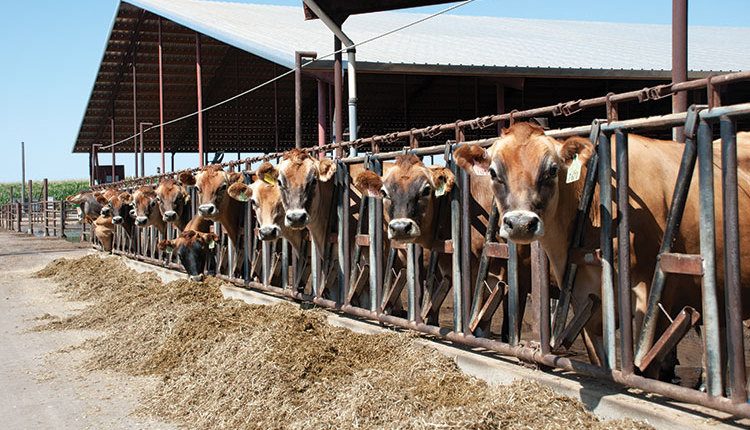The author is director of regulatory and economic affairs for the Milk Producers Council.

Like Rodney Dangerfield, who was a famed actor and comedian, Federal Milk Marketing Orders get no respect. Folks love to complain about them. Critics suggest that they are too complicated . . . too old . . . too focused on Class I . . . a detriment to growth in exports . . . too dependent on the Chicago Mercantile Exchange (CME) . . . and generally an outdated relic of the past. That being said, many among us suggest FMMOs need a radical overhaul.

Who better to set Class I prices . . . the farmers via federal orders or big-box retailers?
Like Rodney Dangerfield, who was a famed actor and comedian, Federal Milk Marketing Orders get no respect. Folks love to complain about them. Critics suggest that they are too complicated . . . too old . . . too focused on Class I . . . a detriment to growth in exports . . . too dependent on the Chicago Mercantile Exchange (CME) . . . and generally an outdated relic of the past. That being said, many among us suggest FMMOs need a radical overhaul.
I will address each of these complaints, but first, let us remember why Uncle Sam became involved in regulating milk prices in the first place. The reason the government is involved is because dairy farmers must sell milk every day of the year to a buyer who does not have to buy milk every day. That inherent imbalance in the transactional relationship between dairy farmers and processors is why the government gets involved. Federal officials essentially play the role of a referee — a referee who does not set the price or the terms but discovers the price and supervises the terms.
The federal umpire
The Federal Milk Marketing Program is the vehicle through which the government carries out this referee role. The FMMO system is a voluntary system. Producers vote the system into existence. Producers also can vote the system out of existence. Other than Class I milk, no other usage of milk is required to participate in the FMMO or pay minimum prices. If producers and processors want to get together and develop their own pricing relationship, there is nothing in the FMMO rules that prohibits this from occurring.
I find the accusation that FMMOs inhibit exports to be particularly unconvincing. We have steadily grown the percentage of U.S. milk that goes into exports over the past 15 years under the federal order system. How is that a sign of failure?
There are times when the industry’s reliance on the CME causes significant pricing disparities. But that is not the fault of the FMMOs. USDA does not use CME prices in any of its classified pricing formulas.
What it uses are surveys of what manufacturers of cheese, butter, nonfat dry milk, and dry whey are selling their products for in the marketplace. It is these manufacturers that decide to use the CME cash market as the price discovery mechanism for their relationship with the end users of these products.
The relationship between the market and the CME is ripe for another model, but that is not a problem that the FMMOs caused or should be required to fix. And if the industry fixed it, the FMMOs would need to change nothing for that fix to be felt in the FMMO pricing formulas.
Taxes and milk orders
As for the charge that FMMOs are complicated, it reminds me of the charge that the tax code is complicated. So, let’s simplify the tax code with a new simple Form 1040. “How much did you earn in 2020? Send it in.”
Simple, but not fair.
The basic outline of the FMMO formulas is not complicated. The value of Class III milk used for cheese starts with the value of the cheese times how many pounds of cheese are made from 100 pounds of milk, less the cost to manufacture the milk into the cheese. Then add the value of dry whey, multiplied by the pounds of dry whey made from 100 pounds of milk made into cheese, less the cost to manufacture the dry whey.
That’s it. A few straightforward math calculations and you have the hundredweight (cwt.) value of Class III milk.
You do the same type of calculation for Class IV, only you use butter and nonfat dry milk prices. In the background, there are some math calculations that do get complicated, but those are in place to achieve fairness and equity between the producer and processor. Remember, no one is required to pay these prices unless they voluntarily associate with the order.
What about beverage milk?
Now to Class I. Folks like to point to the evolution of the industry away from fluid milk toward other dairy products as a reason to denigrate the FMMOs’ strict regulation of Class I. Certainly, it is true that fluid milk has shrunk over time as a percentage of dairy demand, but Class I still occupies a dominate place in the usage of milk, particularly in some parts of the country. The FMMOs do regulate Class I sales and require Class I milk to be pooled and to pay the regulated minimum prices in the FMMO areas. Those Class I prices are directly tied to real-time market prices, meaning they are not arbitrarily established.
Consider this question: If the government did not enforce a Class I price in the market, who do you think would set Class I prices in this country? The producers? Or the big-box store chains that control a massive percentage of the American bottled milk market? If you do not like FMMO Class I prices now, do you think you would be happier if Walmart set your price? The likely answer is a flat out no.
Deserves some reflection
In defending the basic structure of the FMMO, there are some specific areas where FMMOs could use some tweaking. Some of the rules governing who can have access to distant FMMO dollars could use some tightening up. Maybe tighter rules on jumping in and out of the pool might have value. It is probably time to at least discuss potential adjustments to make allowances and, maybe, the product mix for the formulas.
Those types of tweaks can be made under the current FMMO structure. Folks arguing for radical change are usually objecting to the government’s role as the referee. However, the basic fact that dairy farmers must sell milk every day to a buyer that does not have to buy milk every day has not changed.
The FMMOs have not been an impediment to progress in the U.S. dairy industry. Nearly everything we need to do to continue to flourish as an industry can be accomplished without destroying the FMMO system.









